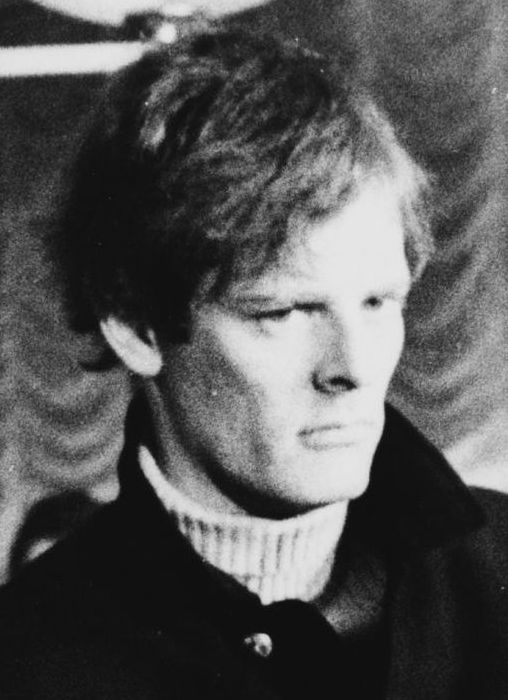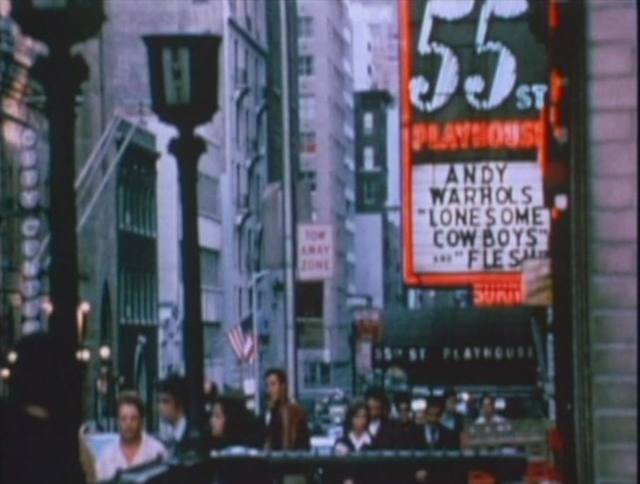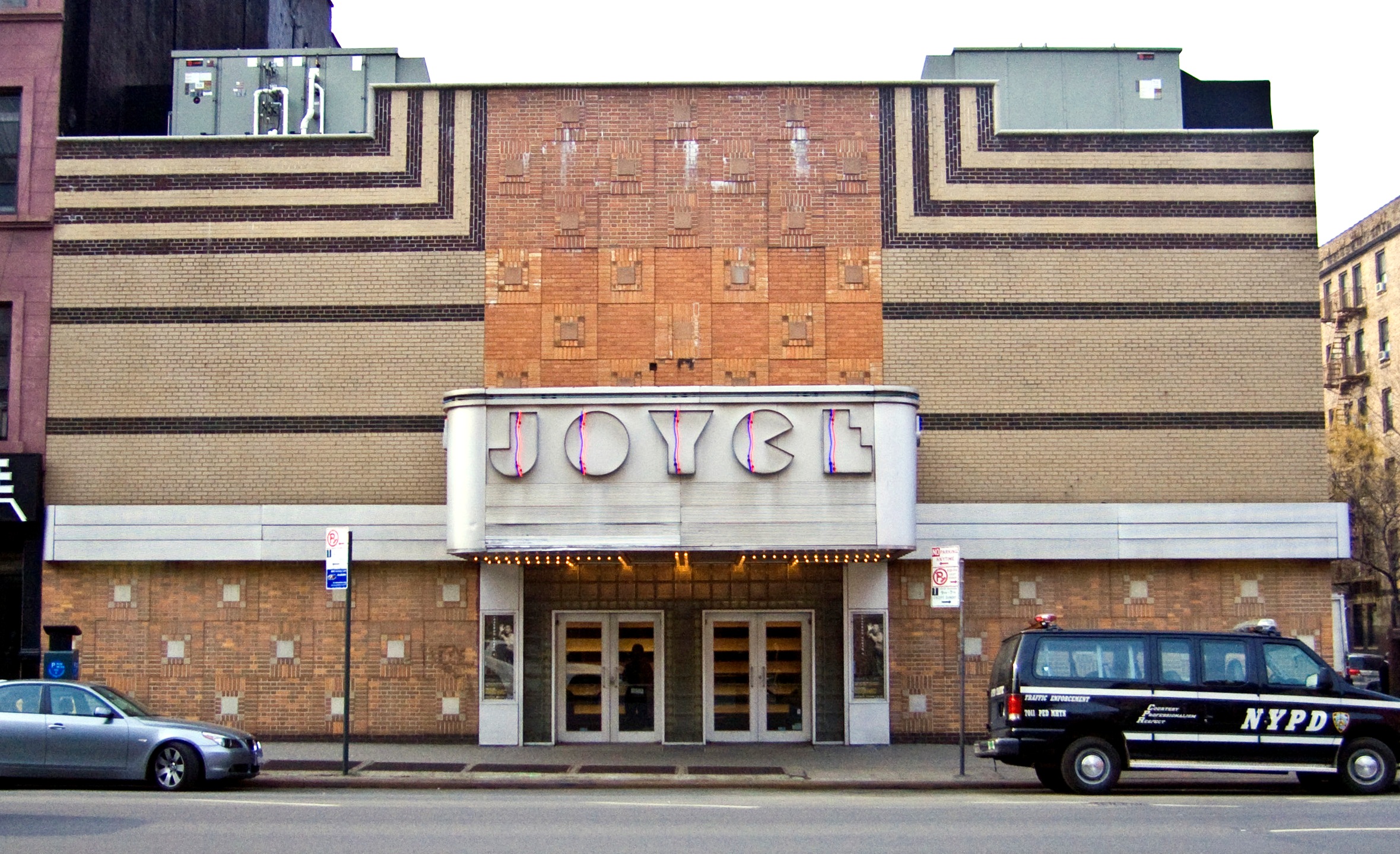|
Auricon
Auricon cameras were 16 mm film Single System sound-on-film motion picture cameras manufactured in the 1940s through the early 1980s. Auricon cameras are notable because they record sound directly onto an optical or magnetic track on the same film as the image is photographed on, thus eliminating the need for a separate audio recorder. The camera preceded ENG video cameras as the main AV tool of television news gathering due to its portability–and relatively quick production turn-around–where processed negative film image could be broadcast by electronically creating a positive image. Additionally, the Auricon found studio use as a 'kinescope' camera of live video off of a TV screen, but only on early pre-NTSC line-locked monochrome systems. Auricon cameras were used primarily by news and documentary filmmakers. They had also found favor with independent and experimental filmmakers such as Paul Morrissey because of their ability to record long takes with sound on film. Eventua ... [...More Info...] [...Related Items...] OR: [Wikipedia] [Google] [Baidu] |
Kodak Cine Special 16mm Cameras
The Kodak Cine Special 16mm Cameras (CKS) are a family of precision, versatile, spring-wound 16mm silent movie cameras produced by Eastman Kodak from the 1930s to the 1960s, and intended for advanced consumers and industry professionals. While its rectangular format was typical of earlier Kodak 16 mm cameras (such as Cine-Kodak, Kodak Models B, F and K), the CKS 'box' was formed by two joined sections: the spring motor half with the user controls, winding cranks, and gear work to the shutter. The other half was a film magazine which docked to the motor. This allowed the cinematographer to pre-load multiple magazines of film for quick interchange of film. Standard features included: * Interchangeable lenses * Variable shutter creating fades and dissolves effects * Reflex focusing * Quick-change film magazines * 100’ film magazines * Chime warning when the spring is almost unwound * Slots in front of the lens in which to insert masks of various shapes * Manual cranking ... [...More Info...] [...Related Items...] OR: [Wikipedia] [Google] [Baidu] |
16 Mm Film
16 mm film is a historically popular and economical gauge of film. 16 mm refers to the width of the film (about inch); other common film gauges include 8 and 35 mm. It is generally used for non-theatrical (e.g., industrial, educational, televisual) film-making, or for low-budget motion pictures. It also existed as a popular amateur or home movie-making format for several decades, alongside 8 mm film and later Super 8 film. Eastman Kodak released the first 16 mm "outfit" in 1923, consisting of a camera, projector, tripod, screen and splicer, for US$335 (). RCA-Victor introduced a 16 mm sound movie projector in 1932, and developed an optical sound-on-film 16 mm camera, released in 1935. History Eastman Kodak introduced 16 mm film in 1923, as a less expensive alternative to 35 mm film for amateurs. The same year the Victor Animatograph Corporation started producing their own 16 mm cameras and projectors. During the 1920s, ... [...More Info...] [...Related Items...] OR: [Wikipedia] [Google] [Baidu] |
Flesh (1968 Film)
''Flesh'' (alternative title: ''Andy Warhol's Flesh'') is a 1968 American film directed by Paul Morrissey and starring Joe Dallesandro as a male prostitute, hustler working on the streets of New York City. It highlights various Warhol superstars, in addition to being the film debuts of both Jackie Curtis and Candy Darling. Also appearing are Geraldine Smith (actress), Geraldine Smith as Joe's wife and Patti D'Arbanville as her lover. ''Flesh'' was first shown at the New Andy Warhol Garrick Theatre, Andy Warhol Garrick Theatre at 152 Bleecker Street in Manhattan on September 26, 1968. In January 1970, the film premiered at the Open Space Theatre in London, but due to controversy surrounding the film's censorship, it was pulled from the theater and wasn't publicly shown until 1971. ''Flesh'' is the first film of the "Paul Morrissey Trilogy" produced by Andy Warhol. The other films in the trilogy include ''Trash (1970 film), Trash'' (1970) and ''Heat (1972 film), Heat'' (1972). All ... [...More Info...] [...Related Items...] OR: [Wikipedia] [Google] [Baidu] |
Paul Morrissey
Paul Morrissey (born February 23, 1938) is an American film director, best known for his association with Andy Warhol. He was also director of the first film in which a transgender actress, Holly Woodlawn, starred as a girlfriend of the main character played by Joe Dallesandro in ''Trash (1970 film), Trash'' (1970). Life and career Of Irish extraction, Morrissey attended Ampleforth College and Fordham University, both Catholic schools, and later served in the United States Army. A political conservative and self-described "right-winger", who has publicly protested against immorality and anti-Catholicism, Morrissey's long-term collaboration with the low-keyed, apparently apolitical Warhol was viewed by many as "a successful mismatch", although both men did share some traits, e.g. both were practicing Catholics from ethnic backgrounds (Warhol was of Rusyns, Rusyn descent). Morrissey's bold, avant-garde direction in film making is often attributed to his relationship with Warhol ... [...More Info...] [...Related Items...] OR: [Wikipedia] [Google] [Baidu] |
CP-16
The CP-16, CP-16A, CP-16R, CP-16R/A and CP-16R/DS cameras are 16mm motion picture cameras manufactured by the Cinema Products Corporation of Hollywood, California. A range of cameras of Auricon ancestry. They were primarily intended for television news filming and were quite popular with local and national news agencies before the advent of portable videotape Electronic News Gathering, (ENG) formats, as well as documentary and drama production. They featured a compact magnesium alloy body, a crystal locked drive system, interchangeable lenses, and a magnetic audio system with a built in mixer that recorded onto special pre-striped (and now discontinued) 16mm single-perf negative or reversal film. It accepted both Mitchell and Cinema Products 400 foot film magazines. The CP-16 series used a special 12-120mm Angenieux zoom lens with a prismatic viewfinder. The CP-16 used a variety of Angenieux lenses, a favorite among television news photographers was the 9.5 - 57mm zoom with a F1.6- ... [...More Info...] [...Related Items...] OR: [Wikipedia] [Google] [Baidu] |
Lonesome Cowboys
''Lonesome Cowboys'' is a 1968 American Western film directed by Andy Warhol and written and produced by Paul Morrissey. The film is a satire of Hollywood Westerns, and was initially screened in November 1968 at the San Francisco International Film Festival, where it won the Best Film Award. On May 5, 1969, it was shown for initial viewings at the New Andy Warhol Garrick Theatre in New York City. Production ''Lonesome Cowboys'' was shot in January 1968 in Old Tucson and the Rancho Linda Vista Dude Ranch in Oracle, Arizona on a budget of $3,000. The film features Warhol superstars Viva, Taylor Mead, Louis Waldon, Eric Emerson, and Joe Dallesandro. The plot loosely is based on ''Romeo and Juliet'', hence the names Julian and Ramona of the two leads. While in Arizona on a college lecture tour in November 1967, Warhol booked film screenings of excerpts from '' Chelsea Girls'' followed by a question-and-answer session with the artist, Morrissey, Viva, and Allen Midgette at Ari ... [...More Info...] [...Related Items...] OR: [Wikipedia] [Google] [Baidu] |
Empire (1964 Film)
''Empire'' is a 1965 American black-and-white silent art film by Andy Warhol. When projected according to Warhol's specifications, it consists of eight hours and five minutes of slow motion footage of an unchanging view of New York City's Empire State Building. The film does not have conventional narrative or characters, and largely reduces the experience of cinema to the passing of time. Warhol stated that the purpose of the film was "to see time go by." A week after the film was shot, experimental filmmaker Jonas Mekas (who was cinematographer for ''Empire'') speculated in the ''Village Voice'' that Warhol's film would have a profound influence on avant-garde cinema. In 2004, ''Empire'' was included in the annual selection of 25 motion pictures added to the National Film Registry by the Library of Congress, who deemed it "culturally, historically, or aesthetically significant". Synopsis ''Empire'' was filmed at 24 frames per second, and is meant to be seen in slow motion at 16 ... [...More Info...] [...Related Items...] OR: [Wikipedia] [Google] [Baidu] |
Single-system Recording
Single system audio is the system of recording ''sound on film'' or ''SOF''. There are two methods of recording, the older method, optical and the later method, magnetic. SOF was primarily used for news film prior to the advent of portable videotape recording, but was used until recently for documentary film recording. Optical For Optical recording, the film only had a single perforation and the area where the other set of perforations would have been was exposed to a small bright lamp inside the camera controlled by an amplifier (usually in a separate box) that would vary the area of recording (RCA type), by means of shutters pulled back by variation in current, or variations in intensity (Western Electric type). Editing involved painting or taping over the optical track for the distance the sound led the film through the camera and projector. This would avoid the popping sound, but would result in a second of silence. Magnetic Magnetic recording had magnetic media in the area wh ... [...More Info...] [...Related Items...] OR: [Wikipedia] [Google] [Baidu] |
Home For Life
''Home for Life'', the founding documentary of Kartemquin Films released in 1967, depicts the experiences of two elderly people in their first month at a home for the aged. One is a woman whose struggle to remain useful in her son and daughter-in-law's home is no longer appreciated. The other is a widower, without a family, who suddenly realizes he can no longer take care of himself. The film offers an unblinking look at the feelings of the two new residents in their encounters with other residents, medical staff, social workers, psychiatrists and family. Winning the Chicago Award at the Chicago International Film Festival, as well as being an Official Selection at both the New York Film Festival and Edinburgh Film Festival, Kartemquin recently restored ''Home for Life'' and made their landmark film available to own on DVD. [...More Info...] [...Related Items...] OR: [Wikipedia] [Google] [Baidu] |
Gimme Shelter (1970 Film)
''Gimme Shelter'' is a 1970 American documentary film directed by Albert and David Maysles and Charlotte Zwerin chronicling the last weeks of The Rolling Stones' 1969 US tour which culminated in the disastrous Altamont Free Concert. The film is named after "Gimme Shelter", the lead track from the group's 1969 album ''Let It Bleed''. ''Gimme Shelter'' was screened out of competition as the opening film of the 1971 Cannes Film Festival. Context This counterculture era documentary is associated with the Direct Cinema movement of the 1950s and 1960s. It was directed by the Maysles Brothers who are strong figures of the era, as well as Charlotte Zwerin. The movement revolves around the philosophy of being a "reactive" filmmaker, recording events as they unfold naturally and spontaneously rather than investigating the subject matter through documentary techniques such as interviews, reconstruction and voiceover. Production The film depicts some of the Madison Square Garden concert ... [...More Info...] [...Related Items...] OR: [Wikipedia] [Google] [Baidu] |
Monterey Pop
''Monterey Pop'' is a 1968 American concert film by D. A. Pennebaker that documents the Monterey International Pop Festival of 1967. Among Pennebaker's several camera operators were fellow documentarians Richard Leacock and Albert Maysles. The painter Brice Marden has an "assistant camera" credit, and Bob Neuwirth, who figured prominently in Pennebaker's Bob Dylan documentary ''Dont Look Back'', acted as stage manager. Titles for the film were by the illustrator Tomi Ungerer. Featured performers include Big Brother and the Holding Company with Janis Joplin, Jefferson Airplane, Hugh Masekela, Otis Redding, Ravi Shankar, the Mamas & the Papas, The Who and The Jimi Hendrix Experience, whose namesake set his guitar on fire, broke it on the stage, then threw the neck of his guitar in the crowd at the end of " Wild Thing". In 2018, the film was selected for preservation in the United States National Film Registry by the Library of Congress as being "culturally, historically, or aes ... [...More Info...] [...Related Items...] OR: [Wikipedia] [Google] [Baidu] |
Pink Flamingos
''Pink Flamingos'' is a 1972 American film directed, written, produced, narrated, filmed, and edited by John Waters. It is part of what Waters has labelled the "Trash Trilogy", which also includes '' Female Trouble'' (1974) and '' Desperate Living'' (1977). The film stars the countercultural drag queen Divine as a criminal living under the name of Babs Johnson, who is proud to be "the filthiest person alive". While living in a trailer with her mother Edie ( Edith Massey), son Crackers (Danny Mills), and companion Cotton (Mary Vivian Pearce), Divine is confronted by the Marbles ( David Lochary and Mink Stole), a pair of criminals envious of her reputation who try to outdo her in filth. The characters engage in several grotesque, bizarre, and explicitly crude situations, and upon the film's re-release in 1997 it was rated NC-17 by the MPAA "for a wide range of perversions in explicit detail". It was filmed in the vicinity of Baltimore, Maryland, where Waters and most of the cast a ... [...More Info...] [...Related Items...] OR: [Wikipedia] [Google] [Baidu] |




